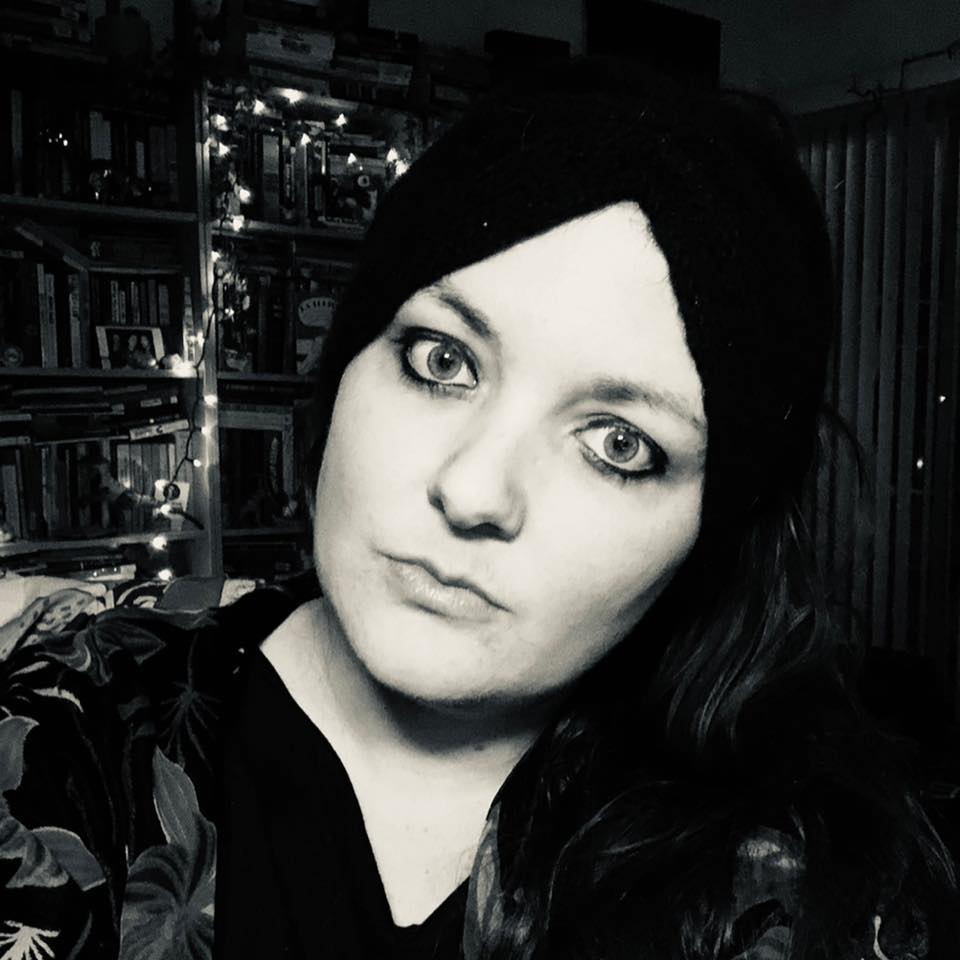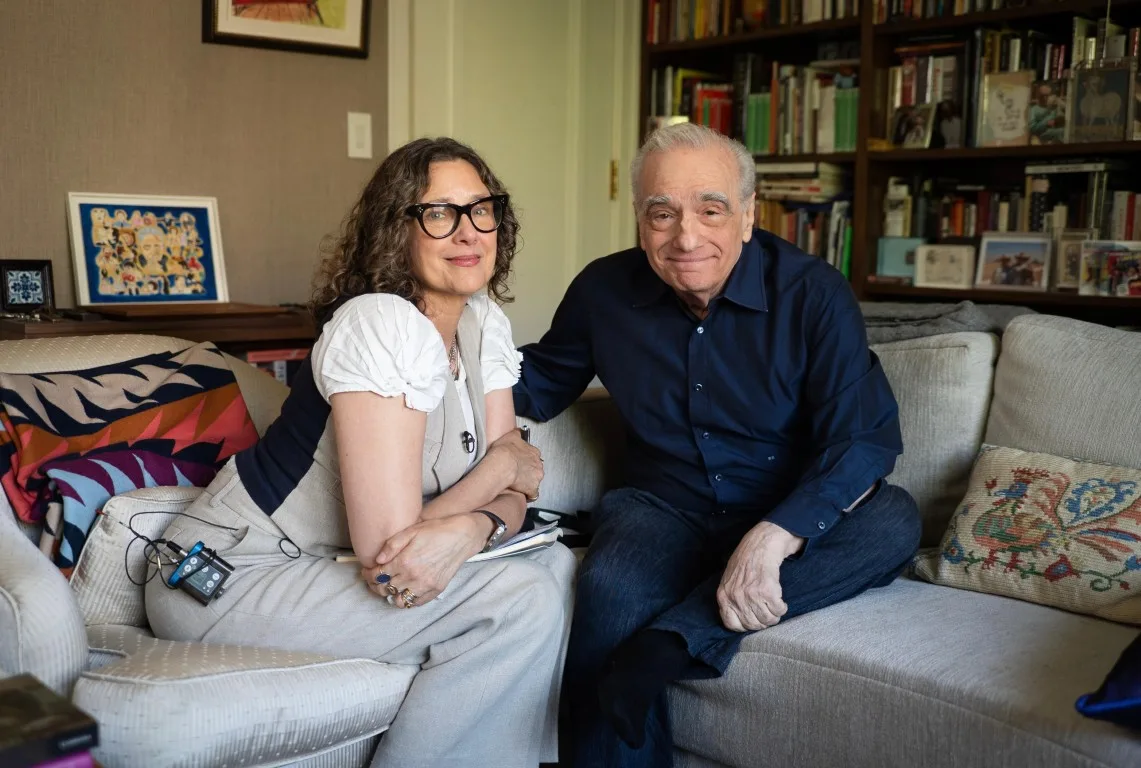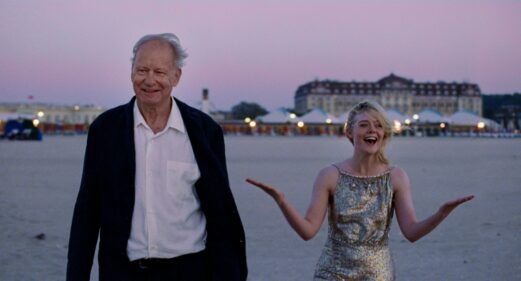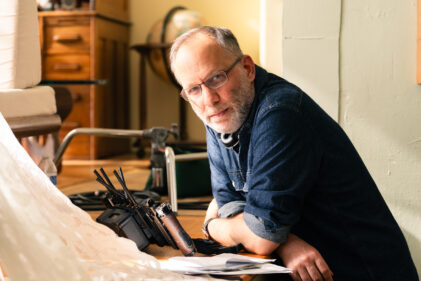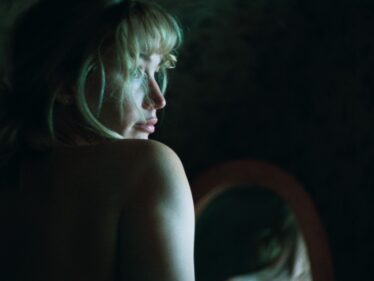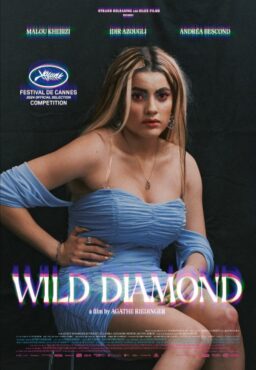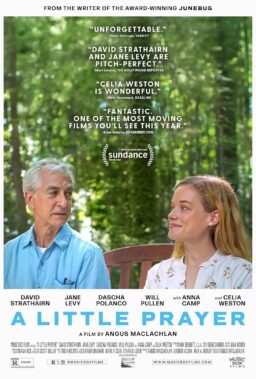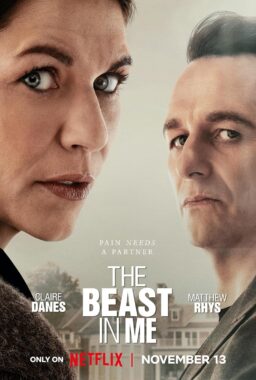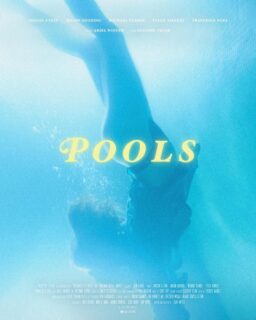The work of filmmaker and historian Martin Scorsese needs no introduction. The director behind countless iconic and award-winning films like “Taxi Driver,” “The Departed,” and “The Wolf of Wall Street,” has been a part of the American film firmament for over half a century. At the same time, his tireless work preserving and promoting world cinema history is practically unparalleled.
It is on this vast canvas that filmmaker Rebecca Miller paints “Mr. Scorsese,” her five-episode exploration of Scorsese, the man. Miller aims to look deeper into Scorsese’s soul via interviews with the filmmaker himself, his long-time collaborators and companions like Robert De Niro, Leonardo DiCaprio, and Isabella Rossellini, contemporaries like Brian De Palma, Paul Schrader, and Steven Spielberg, and even childhood friends and his three daughters, Catherine, Domenica, and Francesca. Miller weaves their insightful observations and anecdotes about Scorsese at various points in his life with footage from Scorsese’s many projects to interrogate the connections between his personal and professional lives, which often blur into one indistinguishable body of work.
No stranger to the limelight herself, Miller is the daughter of playwright Arthur Miller and photographer Inge Morath. She attended Yale University, where she studied painting and literature. In the 1980s, Miller began showing her work at galleries, often including non-verbal films to accompany the exhibits. In the early 1990s, she had supporting roles in films by the likes of Alan J. Pakula, Paul Mazursky, and Mike Nichols. In 1995, her debut feature film “Angela” premiered at the Sundance Film Festival.
Her next film, “Personal Velocity: Three Portraits,” was adapted from short stories from her own book, which had been named the best book of the year by The Washington Post in 2001. She directed her husband, Daniel Day-Lewis, in the father-daughter drama “The Ballad of Jack and Rose” in 2005, and adapted her own writing again for the 2009 ensemble dramedy, “The Private Lives of Pippa Lee.” She followed that up with the screwball comedy “Maggie’s Plan” starring Greta Gerwig, Ethan Hawke, and Julianne Moore. Her most recent film, “She Came to Me,” opened the 73rd Berlin International Film Festival. With her first foray into documentary filmmaking, 2017’s “Arthur Miller: Writer,” she turned her lens inward, exploring her father’s storied life and career.
For this month’s Female Filmmakers in Focus column, RogerEbert.com spoke to Miller about crafting a portrait of Martin Scorsese, the man, through the lens of his film work, finding the story in the editing process, and what it’s like to connect with another artist on a deeply personal level.
Scorsese has had such a long career. What was the genesis of the project?
It was really gradual. It was something that was generated independently. My producing partner, Damon Cardasis, and I were discussing who my next subject would be for a documentary, who we might want to make a film about. I immediately mentioned Marty. We started working on it at the beginning of the pandemic. We did the first two interviews on my porch because we had to. We self-financed the first couple because it was just our friends coming to shoot it. It was very independent, leading from the front, which is what I like to do. Then we began to accrue material because Marty was all for it. He wanted to do it. We had access to some archives, including those of his company. Then Apple came on board. Then I still thought that I was making a feature film for over a year, but then I realized I couldn’t fit in. I had to expand. I really felt it needed to be multiple parts.
Damon Cardasis and Cindy Tolan, my producers, were really behind the idea. So, my editor, David Bartner, and I started sketching it out. First, we thought it was two episodes; then we began to realize that it had a structure quite different from what I thought. We really started busting down the walls and realizing, no, this is a long piece of work. It’s five hours instead of an hour and a half. That’s when we began this other, big journey, and luckily, Apple and Molly Thompson, who was the executive that we worked with there, who was the head of docs there, were very open to it. That’s one of the good things about our time now, that a filmmaker has that elasticity.
The structure reminded me a bit of “The Last Movie Stars,” Ethan Hawke‘s documentary about Paul Newman and Joanne Woodward, which is also, I think, six parts. That length allows you to really delve into the various eras of a talent and how their careers evolve as their personal lives change. Was that on your radar at all while you were working on this, even though they were being made seemingly in parallel?
I believe that’s true. I think I saw it a little later, but by then, we knew what we were doing in terms of the number of episodes.
Obviously, you’ve made a documentary about your father, Arthur Miller, and you’ve made a lot of feature films. I’m always curious about filmmakers who go back and forth between documentary and narrative. If you find one more challenging than the other? They’re such different modes of filmmaking, unless you talk to Werner Herzog.
The big difference is that you don’t have a script for a documentary, or I don’t have a script for a documentary. So the editing is the writing, if you see what I’m saying. You have the words or the units of energy, which are the pieces of film, and then you’re putting them together in certain formatting for the set grammar or sentences, which are film sentences, right? And so that’s the process of writing, whereas with a screenplay and a narrative movie, I have a screenplay which I work on for a long time.
Now, it’s true that sometimes when I’m shooting a screenplay, it changes, and certainly when you’re cutting a feature film, the order of scenes can change. You cut scenes, you manipulate scenes. And there is an element of rewriting in feature film work, but, for the most part, the writing, in my case, has been done prior, whereas in documentary, you might have a sense of what the structure of the whole thing is, but you really are making it up as you go along.
One thing that I think is particularly important to Scorsese, both as a person and a filmmaker, is his relationship with faith. I love the way your film starts with him wanting to be a priest and sort of weaves in and out of his relationship with faith, much like a roller coaster. Was that something you knew early on was going to be a through line, or did you find that in the final edit?
That was one of the things that drew me to him in the first place, actually, was knowing about his Catholicism. Then, knowing that some of the films were quite violent, he obviously had a fascination with those worlds. I thought, How do those things go together? I had an instinct, a hunch, that the spiritual journey was at the core of his whole life, but I didn’t know how. I think one of the journeys that I was on, and that you’re on when you’re watching it, is seeing how. How does that way of looking at the world go with the films? How did they create the films? And how do even the films that seem the furthest away from a religious point of view actually fit in with that point of view? To me, that was very, very interesting.
He is talked about as a violent filmmaker, but Scorsese’s violence really feels like internal violence that gets externalized, because these men don’t know any other way. But I never really knew that that was something Scorsese had in himself. It was really refreshing to have him discuss that. Was that something he talked about early on, or was it after several sessions that he felt comfortable talking about that?
I think we reached that point, possibly around the third or fourth interview, which would have been about eight or nine hours into our conversations. It was a way in. I used the films as stepping stones in terms of chronology, so I would know where I was going, but I was also following the breadcrumbs in terms of how he wanted to tell the story and flesh out the life around the films.
There were a few films and projects that were left out that, as a fan, made me a bit sad. “Bringing Out The Dead” has a little bit of a mention. “Hugo,” I think there was a poster in the background at one point, and then “Boardwalk Empire,” there wasn’t anything. At one point, did you have an expansive version where you covered everything, or were you selective from the start?
First of all, the documentary is not a filmography, so it’s essential to keep that in mind. Because of this man’s truly Shakespearean output, some films are not covered. One of the things I was afraid of was that it would become a list film, like often happens with documentaries on great filmmakers or artists, where the format is “and then he did this, and then he did this, and then he did this.” And that’s not what this film was. This film is really about the dance between the filmmaker, the artist, and the man, and how the man created the films, and how the films, in turn, created the man. It’s this back and forth, back and forth.
Something like “Hugo,” in a way, is such a big subject that I would almost have to really make a diversion because it is a massive subject. I think it’s an absolutely fantastic film. So it has nothing to do with that. It’s more that I wasn’t able to embed it in terms of the storytelling. And that’s where, unfortunately, you know, the cruelty of having to cut stuff comes in. I mean, it’s terrible, but you can’t include everything. Like his television work, many of his documentaries are not covered. If I had started to try, you would also reach a point where, if you don’t shape something and don’t make strong choices to shape it, then the edit starts to diffuse the energy.
I love that you called it a portrait, which is a nice callback to your film “Personal Velocity.” But I also like that you called it a portrait because it really is an exploration of how the art reflects him, as opposed to, like you said, a filmography. Whereas, if you were doing a film called “Scorsese: Filmmaker,” then you would absolutely need to do a deep dive into “Hugo,” because it’s so deep about his love of the craft and history of film.
Absolutely. Then what you’re saying is central to why I called it a portrait, because a portrait implies somebody is making the portrait. And if that’s my portrait of him, the way I see him, then I’m telling the truth as I saw it, and it leaves room for examination by other people. We do deal with thirty-two films, and that’s a lot, but you’re absolutely right. That’s correct.
You’ve spoken with many of his collaborators, and I was wondering if there were anyone you would have hoped to include but weren’t able to, or if there were any bits that ended up on the cutting room floor during the shaping process?
Inevitably, some things are good but cannot be included. It’s also true of feature films. With “Maggie’s Plan,” there were forty-five minutes of dialogue that were cut from that film. That’s because very often somebody looks at someone, and in a movie that says more, you know, a picture’s worth a thousand words. Sometimes I write more than I need so that I can figure out what lands the best. However, similarly, there were some incredible stories, but another story made the point even better. You don’t want to repeat too much, as this can exhaust the viewer. You also have to keep feeding them. It’s about the drip feed of information, and how to keep pulling a viewer in.
Films are a kind of hypnosis, right? You make a pact with the viewer, so it’s all about how to keep that string taut. You land the fish, and then you have to keep the string taut; if you’re too diffuse, the string gets slack, and the fish escapes. And you want the fish to come all the way through the series, to watch the whole thing. The big tension, for me, was how to keep the viewer’s attention while telling this story, which is also this man’s life, without making it a list or a filmography. Because it still has to function as a film.
I don’t know that I’d ever really heard his two older daughters speak about what it was like to be his daughter during those various eras of his career. He’s someone who has had a kid, it seems like, every fifteen years. I think it’s Domenica who says it was almost like each of them had a different dad. What was the process of speaking with his daughters and getting such personal stories from them?
Well, it was a privilege to be able to talk to them. I love how really different the three women are. They’re all different. They’re all partly reflections of the period of his life when they were born. With Catherine, you can still feel the shadow of his mother and the neighborhood, as she was deeply entrenched in that part of the family, and you could sense it. Then you have Domenica, and the era in which she lived is part of her. It’s the same with Francesca; it’s fascinating. It’s really interesting how that happens.
I was curious if you felt any parallels, as a daughter raised by a very famous creator, to any of their stories?
Well, I also have a half-brother and half-sister from an earlier marriage, and I ended up in the marriage that lasted. It’s a layering, and it’s complex. And so I was able to understand that domain, that sort of geometry, pretty well.
As a filmmaker, making a film about a filmmaker, was there anything in talking with him or talking with his collaborators that helped you grow as an artist, or think about the art differently?
I think endlessly, and I don’t even know yet, because I haven’t made another film yet. But I do feel it’s a bit like I went to graduate school. I do think that’s what happened. I went to graduate school. I got to sit at the feet of one of the greatest film artists that’s ever lived. I got to listen to him, talk to him, think about and unpack his films, watch them again and again, and revisit some of the films that influenced him. I don’t know yet the impact of all that absorption. You don’t really know how an education like that will affect you.
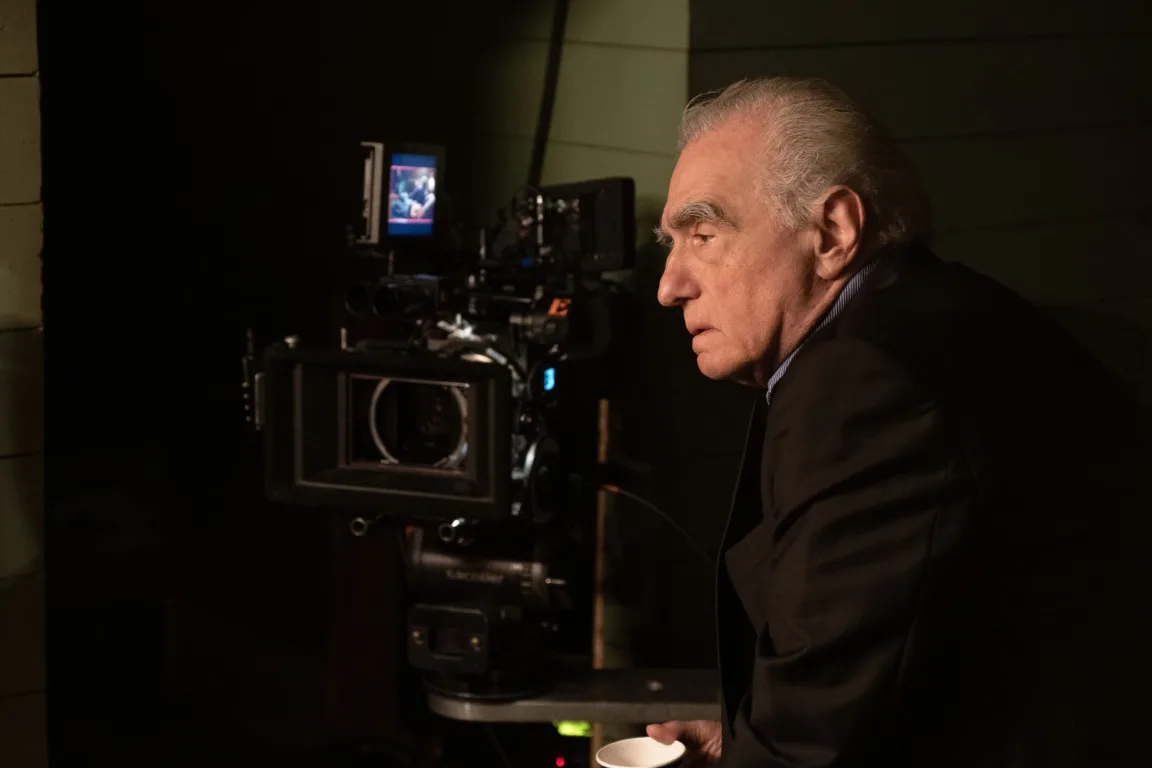
He has a wealth of cinematic knowledge and love, and I really appreciated the way you incorporated that throughout this film, providing little clips so that, similarly, if you’re a young student watching this film, it serves as a guideline to try to discover those films for yourself. Was that part of why you wanted to include film clips?
Absolutely. No man is an island, and he synthesized enormous amounts of influence and made it his own, metabolized it and made it his own, and then invented things that had never really been presented before. He very much, really, completely submerged himself in cinema in general. I would also say that he is really almost like a film evangelist.
His belief in cinema as an art form is so tremendous. There’s the Film Foundation and the work that he does in terms of preserving film, saving films, working with young filmmakers who wouldn’t necessarily have a voice, giving them the chance to make films. He is always looking for ways to advance this art form. I wasn’t able to make that aspect a significant part of this documentary, as I was telling a story, but it is such an important part of his life.
I think one of his daughters mentions that he’s always working. Did you find that to be true? Was it hard to schedule him, because he’s clearly always working on something?
I have to say, I think that because of the pandemic, because he was unable to work for a while, he couldn’t make films. Nobody could make films. It put him into this place, both of interest, but also just being stuck in his study, and he was really excited to get out of there. So he traveled upstate and was on our porch. We did those first interviews, and that helped a great deal. He had all this extra time. By the time he could work again, we had established the roots, and he was committed. We then continued on as the protocol changed, and although we were still wearing masks, we could be inside, and so on. Once vaccines became available, we were able to proceed further.
They were always very generous. I mean, my interviews with him could last four hours. One time, it went so long that I had to stop because I couldn’t really see him anymore. We had a Zoom interview once, which isn’t in the film, except for the audio. We use quite a lot of that audio. It’s a great interview, but it didn’t look as great visually because it was on Zoom. But during the interview, there was no one in the room with him, and I realized, wow, this is great. I thought I should come back and get rid of my whole crew, like they set up the cameras and then they leave. It worked, except we had to do a lot of reframing later, because he would move, and all of a sudden, he was down here, you know, at the bottom of the frame, or whatever, and we couldn’t change lighting.
So at the end of this thing, where there was nobody around to change the lighting, I had to stop and say, “There’s no more light.” But it did make for what felt like more intimate conversations, I think.
I think that really comes across, just how comfortable he was during some of these interviews to really share from deep inside himself. What, for you as a storyteller, does that feel like to know that you’re sharing such a deep part of somebody with somebody?
You mean with the audience?
Well, I guess when you’re in the room, but also when you’re able to put it in the film. So both ways.
In the room, it felt very much, weirdly, like we were all alone. I mean, in fact, we were all alone in a lot of those interviews, but there was a kind of bubble that formed around us. In a way, this was a twenty-hour conversation of sorts, over a period of years, and we would go pretty deep and drop back in. Because he was willing to do that, and because the chemistry worked. You just don’t know how those things are going to work out in terms of our minds and how they mesh with our personalities.
In terms of sharing with the world. I’m grateful that he decided to adopt this attitude towards the film, where he was quite honest. I think that it could perhaps help another generation of people who might have known him just from “The Departed” period to think, oh no, there was this whole other very interesting part of his life, and that then they can go and discover the films again too.
I also particularly loved how open De Niro was in his conversation with you. He and Schrader both talked a bit about the copious amount of drugs during the making of “New York, New York,” which is a crazy movie. I actually really love that film, but it’s always one of his that is thought of as a disaster. But then, when you see what was happening behind the scenes, it’s like a miracle that the movie exists. How many interviews did you conduct with De Niro that he was so open?
We did one interview. I’m not sure if he had spoken to Marty already, but he seemed to have some sense that that was the vibe, that this was for real, and this wasn’t going to be about deflection and stuff like that. I did know Bob a little bit, not in an intimate way. I don’t know exactly, except that once he knew that I knew certain things that Marty had been talking about, he was like, “Oh, okay, so that’s the kind of conversation we’re going to have.”
I thought it was refreshing to hear all the conversations you had with Scorsese’s childhood friends, particularly Sally, the friend’s brother who came in unexpectedly. That part was really funny. Those conversations reveal how much his films reflect, especially those early films, the people he grew up with. Were they all brought in through Scorsese?
I got the contact of Robert Uricola, Salvatore’s brother, through Marty, who was still in touch with him, and John Bivona, as well, who was another of his friends, and Joe Morale, who was Marty’s best friend growing up. Marty and his office helped organize these larger groups around the table and at the cafe as well. It was carefully thought through about who would be the best people to be in the same room with each other. De Niro had his friend, Butch Picarello. Then we had Robert Uricola and Marty.
I do feel that, even though Marty didn’t see the film until it was basically finished, we made the film together. It’s hard to work, but I was following the breadcrumbs. I was going through his mind because he opened the doors and allowed for the connections. Then, when I saw certain things, I thought, ‘Okay, so I’m going to need an interview with this person, that person, or that person.’ Then sometimes, in the case of these larger get-togethers, he would help me figure out who could be there. I think for him, preservation is essential, and it was important that these people were documented. Robert Uricola just died recently. Robbie Robertson just died. You know, it’s crucial that these people were documented.
What do you hope viewers, especially younger viewers, get from this series when they’re finished watching it?
First and foremost, I want people to return to the films or see them for the first time. Many younger people are familiar with his films from “The Departed” onwards, or “Gangs of New York” onwards, so there’s a treasure trove waiting for them, including “Taxi Driver,” “Alice Doesn’t Live Here Anymore,” and even “Mean Streets.” These are great, great films. “King of Comedy,” what a masterpiece, but not everybody knows that film. So that’s one thing.
Another thing I find very beautiful is how many times in his life he failed and had to pick himself back up again, reinvent himself as a filmmaker, essentially, and start anew. I think that is inspiring on a personal level and as a filmmaker. I think that’s inspiring for anyone. You don’t have to be an artist. When we fall down, we have to pick ourselves up. And that’s tough, and he had to do it a lot of times, and that, to me, is very beautiful.
In this column, I speak to women who make films. In my previous column, Sierra Falconer, who made “Sunfish (& Other Stories On Green Lake,” studied your film “Personal Velocity: Three Portraits” while she was making her own film. I was wondering if there are any other women who make films that either inspire you or whom you think readers should seek out?
Jane Campion was a huge influence on me, and I actually befriended her somewhat. I happened to be in Australia at a certain point, and I showed her a script I had, and she said, “I think you’re gonna have a career.” It was a truly empowering and optimistic moment for me. Because it wasn’t a given that you were going to get to make films as a woman in that period, you were thought of as a little bit ridiculous in a certain way. At least I was, I think, when I first said I wanted to make films. There was very little traction. And when she told me that, she was just about to make “The Piano,” actually, and look what happened there. So I would say she was the big one for me.
“Mr. Scorsese” premieres this Saturday, October 4th, at the New York Film Festival and will be available on Apple TV+ on October 17th.
